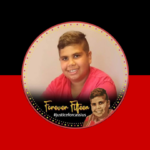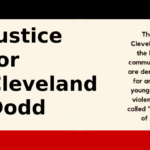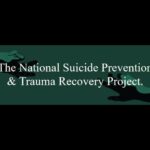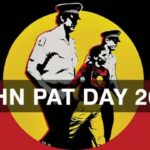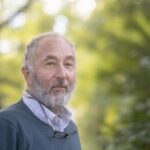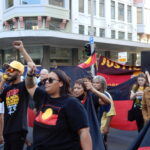Second First Nations Youth Death in Custody in WA in Less Than a Year
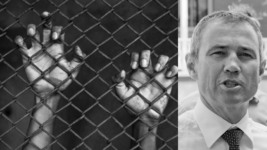
A second First Nations youth died in the custody of the WA state, when, last Thursday night, a yet-to-be identified 17-year-old First Nations youth took his own life, after being imprisoned for two days at that state’s only child prison: Banksia Hill Youth Detention Centre.
The first death involved 16-year-old Cleveland Dodd who was found unresponsive in his cell on 12 October last year. At the time of his death, the Yamatji boy was being held in Unit 18: a wing of the Casuarina adult maximum security prison, used to detain the state’s most troubled youth inmates.
Banksia Hill has received heavy criticism over recent years due to its harsh and dehumanising treatment of child inmates, especially with its habitual use of solitary confinement for prolonged periods, while also sending inmates to Unit 18 at an adult prison, which is a breach of human rights.
Aboriginal custody deaths have always been a constant crisis of the Australian state. And in 1991, the Royal Commission into Aboriginal Deaths in Custody released 339 recommendations to improve the situation, yet since then, 571 more Indigenous people have died in police or corrections custody.
The two youth deaths in WA come after cruelty of treatment in that state’s youth detention had been under scrutiny for several years, while last week’s incident occurred after 12 months that have seen other jurisdictions actively progressing policies that crack down specifically on First Nations youth.
A cooked system
In regard to last week’s Aboriginal death in custody, the WA Department of Justice said the 17-year-old was found unresponsive at 9.50 pm last Thursday night, while WA premier Roger Cook deemed the incident “a horrible, horrible event” that amounts to a “failure” in the system.
“Clearly, a failure has taken place because someone has lost their life and we will now undertake the very important task of understanding the circumstances that preceded his death,” Cook said. “The system’s not good enough.” But he then claimed he’s seen significant improvements made to it.
However, children from Banksia Hill, about 20 of them, continue to be held at the notorious Unit 18 at Casuarina adult prison. And holding children in adult facilities is a violation of their rights, as adult prisons are more severe than child facilities. And it’s likely that Unit 18 has years of use ahead of it.
Unit 18 is where WA’s first ever child death in custody occurred last October, when Cleveland Dodd took his own life. The teen was on remand in Unit 18 when he did so, and his bail application hearing had just been delayed for the third time, 12 hours prior to his suicide.
But as it turns out, the 17-year-old boy who died last Thursday at Banksia Hill had recently been released into residential rehabilitation, after expressing that he could not deal with the Unit 18 conditions he was being detain within at that point. And following his having absconded from the rehab centre, he was rearrested and sent to Banksia Hill, where he took his own life two days later.
“The Western Australian government is committed to the urgent improvement of Unit 18,” advised WA corrections minister Paul Papalia last October after Dodd’s death, “to making it a better place, until we have an alternative location suitable for managing the complex cohort housed there.”
Unit 18 has been used as a temporary place of detention for the most “disruptive” child detainees at Banksia Hill since mid-2022. And over its time in operation, the facility has been used to imprison up to 20 children aged between 14 and 17.
The reason why the Cook government will continue its much-maligned detaining of children in the adult prison is that it’s currently building a $1 million extension at Banksia Hill that’s being designed to deal with child inmates with “behavioural issues”, and it could take years to complete.
And when it was announced, this extension proposal came around the same time as a class action against Banksia Hill Youth Detention Centre was launched, and this involves a group of hundreds of ex-inmates suing the WA state over the multiple human rights abuses they suffered whilst in its care.
Indigenous youth crackdown is trending
Senator Lidia Thorpe has been calling on the Albanese government to intervene at the federal level both in terms youth detention and in taking action on Aboriginal deaths in custody, as she points out that the majority of the Royal Commission’s recommendations remain unactioned.
The Gunnai Gunditjmara and Djab Wurrung senator states that in terms of children who fall foul of the law, the government must begin to look at solutions outside of the lens of punishment within detention centres, and it should rather look at noncustodial alternatives.
But Thorpe also pointed out that this second Aboriginal child death took place in WA, at the same time as most other jurisdictions, rather than looking at alternatives that don’t involve locking up kids as young as 10, are instead winding back the clocks on dealing with lawbreaking children, of which the overwhelming majority of those acted against and imprisoned are First Nations kids.
The Queensland government twice suspended its Human Rights Act last year, in order to facilitate laws allowing kids to be locked up for breach of bail and also to maintain the ability to detain them in adult watchhouses.
The NSW Minns government shocked its constituency when it decided it would be hitching its wagon to the Queensland model, as it passed laws that were designed to ensure that a group of Aboriginal teens were kept locked up in prison, as well as increasing time spent inside for kids who brag about committing certain crimes online.
The Victorian government recently announced that it is reforming laws so that it can remand more children aged between 12 and 17, and premier Jacinta Allan added that despite the previous Labor premier committing to raise the age of criminal responsibility to 14, she’s dumped that proposal.
And in an election outcome that really signals that there is a pattern of Australian governments toughening law and order youth regimes, which, again, are overwhelming and disproportionately targeting First Nations children, the Country Liberals took out the Northern Territory election a fortnight back with the chief issue being youth crime.
Indeed, new NT Country Liberal premier Lia Finocchiaro has promised to expedite laws to ensure the age of criminal responsibility, or the age at which a child can be sent to prison, is dropped back down from 12 to 10 and to reintroduce spit hoods, as she plans to crackdown on youth crime in the Top End.
Finocchiaro is a born and bred Territorian, who feels because of the law-and-order issues currently being faced, her younger fellow constituents are missing out on the sort of upbringing she experienced because of this crime, and this lifestyle issue can obviously be improved, according to the newly-minted NT premier, as long as she has the ability to lock up 10-year-old Indigenous youths.


